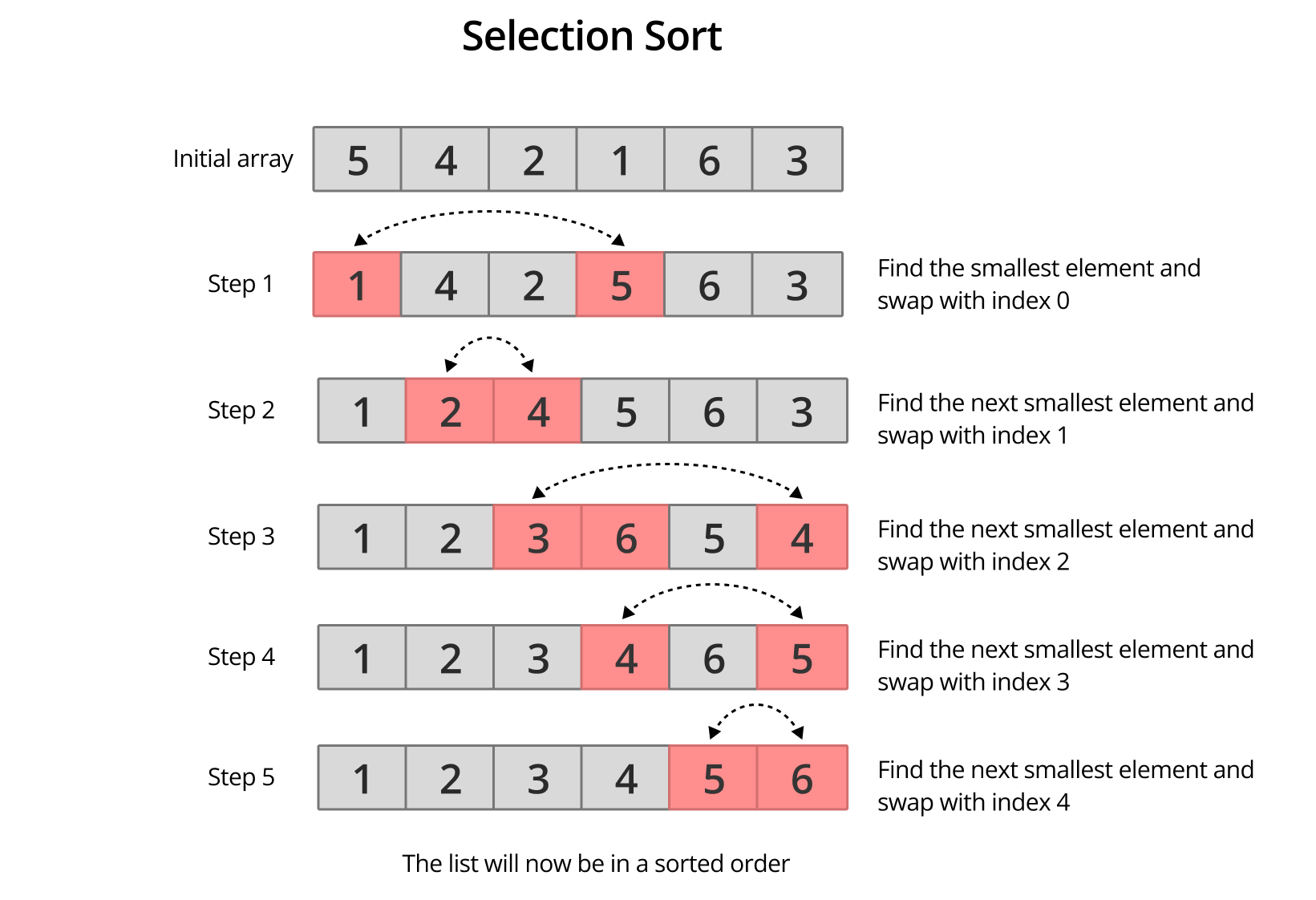Selection Sort Algorithm
Introduction
Selection Sort is another fundamental, comparison-based sorting algorithm. It is known for its simplicity and has performance advantages over more complicated algorithms in certain scenarios.

Explanation
Selection Sort works by dividing the input list into two parts: a sorted sublist and an unsorted sublist. In each iteration, the algorithm finds the smallest (or largest, depending on the sorting order) element from the unsorted sublist and swaps it with the leftmost unsorted element, moving it to the sorted sublist.
JavaScript Implementation
function selectionSort(arr) {
let n = arr.length;
for (let i = 0; i < n; i++) {
// Finding the smallest number in the unsorted portion
let min = i;
for (let j = i + 1; j < n; j++) {
if (arr[j] < arr[min]) {
min = j;
}
}
// Swapping the found minimum element with the first element
if (min !== i) {
let temp = arr[i];
arr[i] = arr[min];
arr[min] = temp;
}
}
return arr;
}
// Example: selectionSort([29, 72, 98, 13, 87]);Pros and Cons
- Pros:
- Simplicity and ease of implementation.
- Performance benefits over more complex algorithms for small datasets.
- Does not require additional memory space for its operation.
- Cons:
- Inefficient for large datasets with (O(n^2)) time complexity.
- Less efficient than more advanced sorting algorithms like Quick Sort or Merge Sort.
Time Complexity
- Worst, Average, and Best Case: (O(n^2)), where (n) is the number of items being sorted.
Space Complexity
- Constant Space Complexity: (O(1)), as it makes all of its operations in place without using any additional storage.
Practical Use Cases
Teaching and Understanding Sorting Mechanisms:
- Like Bubble Sort, Selection Sort is a popular choice in educational contexts for teaching sorting algorithms. Its simple and intuitive mechanism of selecting the smallest (or largest) element and putting it into its correct position makes it easy for students to understand how sorting algorithms function at a basic level.
Small-scale Applications:
- Selection Sort can be particularly useful in scenarios where the dataset is relatively small, and the cost of implementing a more complex algorithm does not justify the marginal performance gain. For instance, in a small web application where a user’s preferences or a list of options need to be sorted, Selection Sort can provide an uncomplicated and direct approach.
Conclusion
Selection Sort, with its uncomplicated logic and ease of coding, is beneficial for educational purposes and small datasets where the simplicity of the algorithm is more significant than the efficiency. While not suitable for large-scale data processing, it remains an excellent tool for learning and applying basic sorting principles in JavaScript.